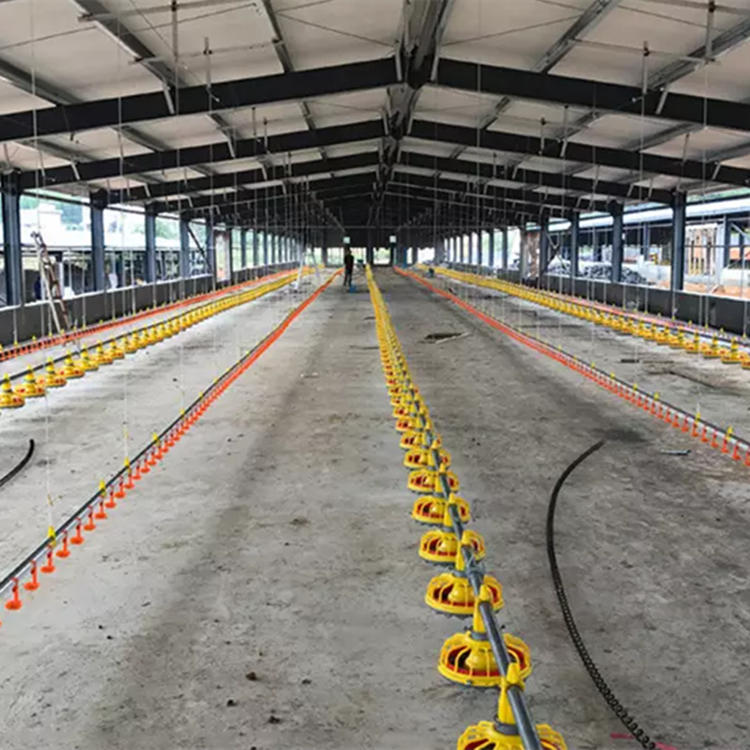Automated Poultry House - Revolutionizing Poultry Farming Efficiency
Sep . 15, 2024 04:58 Back to list
Automated Poultry House - Revolutionizing Poultry Farming Efficiency
Automated Poultry Houses The Future of Poultry Farming
As the global demand for poultry products continues to rise, the poultry farming industry is increasingly turning towards automation to enhance productivity, efficiency, and animal welfare. Automated poultry houses are revolutionizing how farmers manage their flocks, offering advanced solutions that address both economic and environmental challenges.
One of the primary advantages of automated poultry houses is the significant increase in productivity they offer. These high-tech facilities utilize advanced machinery and computer systems to monitor and control various aspects of chicken management, such as feeding, watering, temperature, and lighting. Automated feeding systems ensure that chickens receive the right amount of feed at the optimal times, reducing waste and promoting healthier growth. Additionally, climate control systems can maintain ideal temperature and humidity levels, creating a comfortable environment for the birds, which in turn leads to better feed conversion rates and higher egg production.
Another critical benefit of automated poultry houses is the improved animal welfare they can provide. Traditional poultry farming methods often lead to overcrowding and inadequate attention to individual birds. In contrast, automation allows for better monitoring of flock health. Sensors can detect signs of illness or distress, enabling farmers to take timely action. Moreover, automated systems can manage lighting to mimic natural day-night cycles, which are essential for the birds' well-being. Such innovations not only enhance the quality of life for the chickens but also result in healthier, more productive poultry.
automated poultry house

Cost efficiency is a significant factor driving the adoption of automated poultry houses. While the initial investment in automation technology may be high, the long-term savings can be substantial. Labor costs are reduced as fewer workers are needed to manage the flock, and operational efficiency leads to lower feed and energy costs. For many poultry farmers, these savings can offset the initial expenditures within a few years, making automation a financially viable option.
Environmental sustainability is another critical aspect of automated poultry farming. Automation allows for precise management of resources, reducing waste and minimizing the ecological footprint. For example, automated waste management systems can process poultry litter in an environmentally friendly way, transforming it into organic fertilizer. Furthermore, by optimizing feeding processes, farmers can contribute to reducing greenhouse gas emissions associated with poultry production.
However, the transition to automated poultry houses is not without challenges. Farmers must invest time and resources into training and adapting to new technologies. Additionally, there are concerns about the potential loss of jobs in rural communities. Nonetheless, many advocate that automation can create new opportunities by increasing productivity and enabling farmers to focus on higher-level management tasks.
In conclusion, automated poultry houses represent a significant advancement in poultry farming, offering increased productivity, improved animal welfare, cost savings, and environmental benefits. As technology continues to evolve, the future of poultry farming looks promising, paving the way for a more sustainable and efficient industry capable of meeting the demands of a growing global population. Embracing automation may well be a crucial step for poultry farmers aiming to thrive in a competitive market.
-
Automatic Drinking Line: AI Enhanced for Peak Efficiency
NewsAug.04,2025
-
Automatic Feeding Line System - Pan Feeder Nipple Drinker|Broiler Farming Poultry Equipment
NewsAug.03,2025
-
Automatic Feeding Line System-Anping County Yize Metal Products Co., Ltd.|Chicken Farming Automation&Durable PP Construction
NewsAug.03,2025
-
Automatic Feeding Line System - Anping County Yize Metal Products Co., Ltd.|Durable PP Material&Easy Maintenance
NewsAug.03,2025
-
Top Quality Pig Farrowing Pens for Enhanced Productivity
NewsAug.03,2025
-
Automatic Feeding Line System - Anping County Yize Metal Products Co., Ltd.
NewsAug.02,2025






